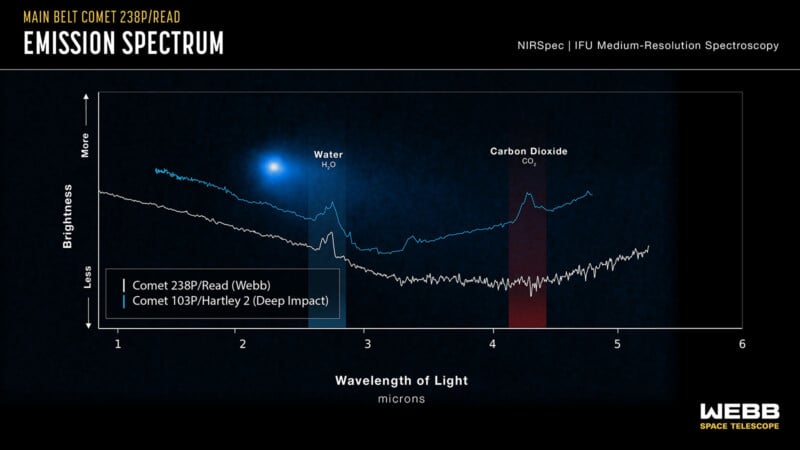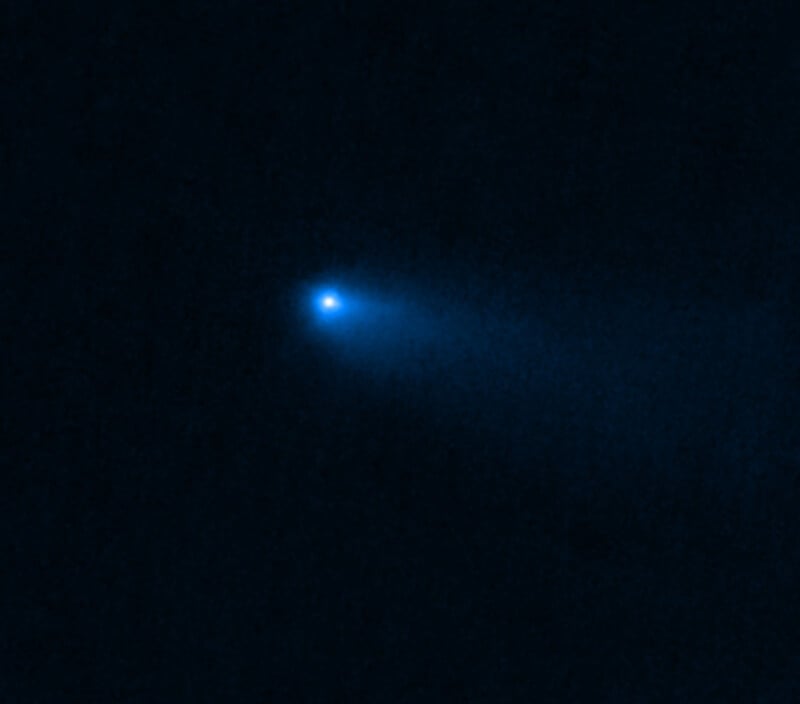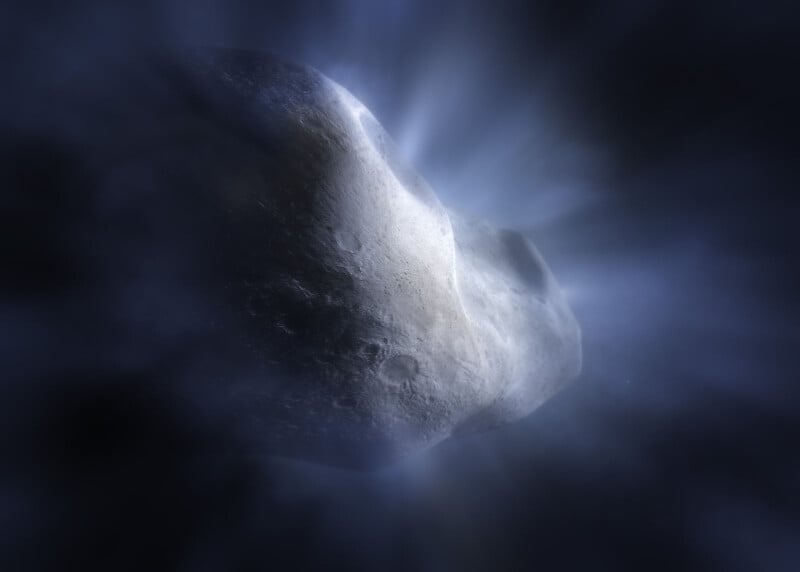![]()
NASA’s James Webb Space Telescope has helped scientists achieve another breakthrough. Solar system scientists working to understand the origins of Earth’s abundant water have used Webb’s Near-Infrared Spectrograph (NIRSpec) instrument to confirm water vapor around a comet in the main asteroid belt for the first time.
This significant discovery indicates that “water ice from the primordial solar system can be preserved in that region.” The new observations may help reveal where water on Earth came from, answering one of the biggest questions of all: how Earth became host to so much life.
However, like many of Webb’s most interesting and important discoveries, finding water in a main-belt comet has perhaps led to more questions than answers.
“The successful detection of water comes with a new puzzle: unlike other comets, Comet 238P/Read had no detectable carbon dioxide,” NASA explains.

“Our water-soaked world, teeming with life and unique in the universe as far as we know, is something of a mystery — we’re not sure how all this water got here. Understanding the history of water distribution in the solar system will help us to understand other planetary systems, and if they could be on their way to hosting an Earth-like planet,” says Stefanie Milam, Webb deputy project scientist for planetary science and co-author of the study reporting the new finding.
The study, “Spectroscopic identification of water emission from a main-belt comet,” has been published in Nature. Additional authors include Michael S. P. Kelley, Henry H. Hsieh, Dennis Bodewits, Mohammad Saki, Geronimo L. Villanueva, and Heidi B. Hammel.
Comet Read (238P) is a main-belt comet, which means that it resides in the solar system’s main asteroid belt but “periodically displays a halo, or coma, and tail like a comet.”
NASA explains that “main belt comets” are a relatively recent classification of celestial objects, and Comet Read was among the three original comets that comprise the first main-belt comets. Before the new category was established, “Comets were understood to reside in the Kuiper Belt and Oort Cloud, beyond the orbit of Neptune, where their ices could be preserved farther from the Sun. Frozen material that vaporizes as they approach the Sun is what gives comets their distinctive coma and streaming tail, differentiating them from asteroids. Scientists have long speculated that water ice could be preserved in the warmer asteroid belt, inside the orbit of Jupiter, but definitive proof was elusive — until Webb.”
The study’s lead author, Michael Kelley of the University of Maryland, explains that only because of precise spectral data from Webb can scientists definitively say that it’s water ice that enables objects in the main belt to show trademark characteristics of comets.

“With Webb’s observations of Comet Read, we can now demonstrate that water ice from the early solar system can be preserved in the asteroid belt,” Kelley says.
While the study’s authors are perhaps surprised by the water vapor around Comet Read, the missing carbon dioxide “was a bigger surprise.”
“Typically, carbon dioxide makes up about 10 percent of the volatile material in a comet that can be easily vaporized by the Sun’s heat. The science team presents two possible explanations for the lack of carbon dioxide. One possibility is that Comet Read had carbon dioxide when it formed but has lost that because of warm temperatures,” explains NASA.
Kelley theorizes that because Comet Read has been in the asteroid belt for a long time, carbon dioxide could have evaporated, as carbon dioxide evaporates more quickly than water ice. Kelley also suggests that Comet Read may have formed in an especially warm pocket of the solar system, where there wasn’t any carbon dioxide present. Basically, the two possibilities being considered are that Comet Read had carbon dioxide, but it has since been lost, or it never had carbon dioxide at all because of its environment.

Study co-author Heidi Hammel of the Association of Universities for Research in Astronomy (AURA), and the lead for Webb’s Guaranteed Time Observations for solar system objects, suggests that the next step is to see how other main belt comets compare to Comet Read.
“These objects in the asteroid belt are small and faint, and with Webb we can finally see what is going on with them and draw some conclusions. Do other main belt comets also lack carbon dioxide? Either way it will be exciting to find out,” Hammel says.
“Now that Webb has confirmed there is water preserved as close as the asteroid belt, it would be fascinating to follow up on this discovery with a sample collection mission, and learn what else the main belt comets can tell us,” adds Milam.





We have no real idea about the sequence of events in the granular formation of the current solar system. Many hypotheses, some general theories, but it has been a dynamic 5B years, for sure. Any water in the belt could be remnants from the collision that created Earth's Moon, for example. Or perhaps whatever stripped Mars' atmosphere. Or maybe there was a planet where the belt is, and it had a lot of water. So many possibilities for great science and research going forward. The JW is a great tool.
ReplyDelete